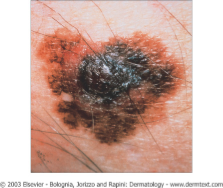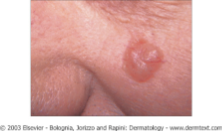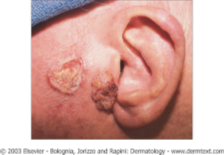In last month's newsletter Dr. Richard Kirkpatrick from Brevard Skin & Cancer Center contributed a great article on keeping your skin fit. It's an important topic often overlooked by runners so we're making it available to all our readers.
There are all kinds of runners and many reasons to run. For most runners a common reason is to stay fit. While you're running, don't forget to keep your skin fit by protecting it from harmful ultraviolet rays from the sun. One solution is to run at night. For those that choose to run during the day, please read the following.
One in five Americans will develop skin cancer during their lifetime. About 8,500 people in the United States are diagnosed with skin cancer everyday and treated at a cost of around $8 billion per year. It makes sense to spend some time, effort, and resources to save the inconvenience, trauma, possible debilitation and potential loss of life that skin cancer can cause.
There are three common skin cancer types - basal cell carcinoma (BCC), squamous cell carcinoma (SCC), and malignant melanoma. BCC is the most common followed by SCC. The least common is Malignant Melanoma which is the most serious and most deadly. BCC and SCC arise in the superficial layer of the skin and are found most frequently in sun exposed areas most frequently the face, ears, bald scalp and neck. BCC usually starts as a pearly bump that grows and will not heal. SCC usually starts as a rough area that tends to turn red and refuses to heal. Both spread slowly but will lead to significant disfigurement if not caught early.
Malignant melanoma is the least common but most aggressive of the three. The rate of melanoma in the United States doubled between 1984 and 2011. Melanoma is the most common form of cancer between the ages of 25-29. If caught early the cure rate for melanoma is 98%, however, melanoma can be a deadly disease causing one American death every hour of every day.



Decreasing exposure to ultraviolet light from the sun is the most preventable of all risk factors for skin cancer including melanoma. The following steps are recommended to decrease ultraviolet light exposure.
Run Early or Run Late: If possible, plan to complete your run before 10AM or start your run after 4PM. If your shadow is shorter than you are then you should be in the shade.
Wear Protective Clothing: A wide brimmed hat, sunglasses, and sleeves are a start. Several clothing lines with good sun protection qualities are available for runners.
Put on Sunscreen: Put sunscreen on all areas that need protection 20 minutes before sun exposure. Apply a generous amount of sunscreen. You will need about one ounce (a shot glass full) for the exposed skin. Use a sunscreen with an SPF of 30 or higher and a lip balm with sunscreen to protect your lips. Look at the label to ensure the sunscreen you are using is water-resistant. Remember to reapply sunscreen after 2 hours to ensure that your sun protection will continue for long runs.
Runners spend a lot of time, energy, and resources protecting their feet and knees by using running shoes and using proper running technique.
- Remember to protect your skin using the tips above as a starting point.
- Remember to check your skin on a regular basis.
- Have your Dermatology provider check your skin and give you information on further skin protection.